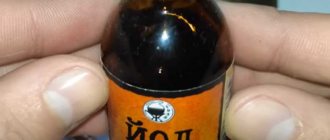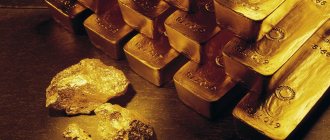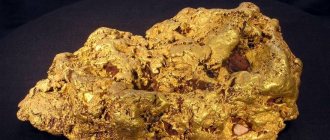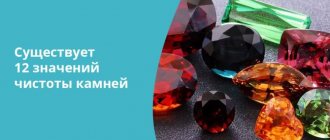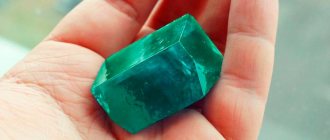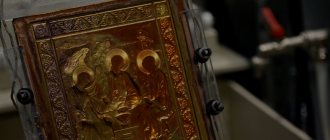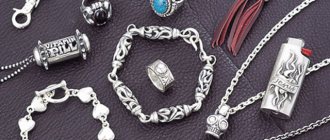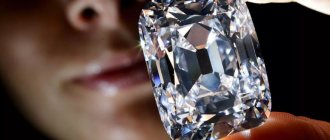Where can you find noble metal in nature?
Gold (Au), although a fairly rare metal, is found everywhere. For example, precious ore in stone can be found in both rocks and sea sand. Most of these deposits are divided into two main types:
- indigenous;
- placer.
Primary deposits
Indigenous deposits are those in which gold-bearing minerals are formed in places where the earth's crust breaks. Magma erupts to the surface, cools and forms rocks. In such rocks, the precious metal is practically never found in its pure form.
As a rule, particles of precious metal are present in salt solutions, which, when solidified, form fossilized rocks. Therefore, natural gold alloys in primary deposits contain elements such as:
- copper;
- platinum;
- silver.
Sulfides of this metal and other types of oxides obtained at high temperatures in the bowels of the earth are quite common.
Modern industry knows rocks containing up to several hundred different impurities. Only a mine in which the mass fraction of gold is at least 1 gram per ton (for primary deposits) is considered suitable for development.
Alluvial
Placer deposits are also called secondary deposits. This is due to the fact that gold placers are formed as a result of rock erosion. Under the influence of rain, groundwater, snow melting, wind and other factors, the rock is destroyed. Water flows move smaller particles to new places.
More often, placers are found in the beds of mountain rivers. The larger the broken rock fragments, the higher along the riverbed they settle. Stones containing precious metal are usually found closer to the source. Smaller and lighter particles flow further with the flow of water, settling at the bottom of mountain lakes.
When developing alluvial deposits, the mass fraction of gold in the ore should not be lower than 0.5 grams per cubic meter.
In total, three types of placers can be distinguished:
- Alluvial. After the stone is broken, gold particles are carried by river waters.
- Eluvial. Ore, not washed away by water flows, is found in watershed areas.
- Deluvial. Rock formations that have been eroded. Aurum occurs in the upper layers of mountain slopes, as well as along the coastlines of lakes and seas.
History of the development of gold-bearing veins
Archaeologists suggest that gold mining as a branch of the national economy originated in the Middle East. From there, jewelry was exported to Egypt. The first finds in Sumerian tombs are more than 3 thousand years old.
One of the richest cultures in gold reserves was the ancient Inca Empire, which was located in the territory of modern Mexico, Peru and Chile. Their legacy is the mythical golden city of Eldorado, in search of which the Spanish conquistadors went.
In the 15th century, the first deposits were discovered in Mexico, Chile and Ghana. Three centuries later, the first gold mining cooperatives appeared in Russia. In 1823, the richest veins were discovered in Canada and America, which was marked by the outbreak of the famous “gold rush”. Even later, deposits were discovered in South Africa and Australia.
What does gold look like in stone?
It is quite difficult for an inexperienced prospector to distinguish the precious metal in a stone. Gold is rarely found in its pure form, and numerous alloys vary in color and degree of luster. In addition, some types of stone have a characteristic shine and can easily be confused with precious ore.
For example, sphalerite or, as it is also called, zinc blende. This is a dark (black or dark brown) color stone with a metallic sheen. Unlike gold-bearing rock, sphalerite crystals are easily scratched and crumble.
A video will help you understand what gold ore looks like. Also in our video you will learn about the main distinctive qualities of precious ore. And get a visual guide to the types of stones containing Au.
Physicochemical characteristics
The physical and chemical description of the stone is as follows: it is silica, silicon dioxide, like other types of quartz, for example, rock crystal. The “hair of Venus” owes its inclusions to rutile, titanium dioxide. In quartz, rutile forms hairs or thin needle-like formations “embedded” in a transparent solid mineral. Less common are combinations of triangles or irregular stars with many rays.
Rutile hairworm has golden-red or black inclusions. Sometimes you can find stones with “curls” of other colors - grayish, green, brown, red. These inclusions consist of goethite or actinolite; There are specimens pierced with black tourmaline crystals.
The physical properties of hair wool are similar to quartz:
- hardness - up to 7 according to Mohs, like untempered glass;
- luster - glassy (thanks to rutile - diamond);
- dielectric;
- insoluble in acids, except hydrofluoric acid, soluble in alkalis.
| Formula | SiO2 |
| Color | Colorless, gray, yellow, brown |
| Shine | Glassy, sometimes greasy in solid masses |
| Transparency | Transparent to translucent |
| Hardness | 7 |
| Cleavage | imperfect |
| Kink | conchoidal |
| Density | 2.6—2.65 g/cm³ |
What rocks contain gold?
In most cases, aurum is found in intrusive massifs. These rocks were formed during the release of magmatic mass to the surface of the Earth. In addition to the precious metal, they contain copper, nickel, titanium, chromium, platinum group metals and other elements.
Quartz crystal is the main supplier of the precious metal. In addition, gold ore is found in quartz diorites and iron ore caps. The close occurrence of the noble metal is indicated by such rocks as pyrite, chalcopyrite, sphalerite, galerite, stibnite and some others.
You can also find small nuggets in the sand of mountain lakes. In this case, the gold particles resemble granules or look like small pieces of wire.
Based on its external characteristics, gold ore in placers is very easy to confuse with pyrite. There are two ways to determine whether a found placer belongs to a precious metal:
- Physical. The easiest way is to scratch the surface of the nugget with a thin needle. Pyrite or mica, unlike gold, quickly crumbles under mechanical stress, which can be seen through a magnifying glass.
- Chemical. If mining occurs in the field, it is not possible to conduct a thorough analysis; it is enough to place the found granule in a beaker with sulfuric acid. If you have a noble metal in front of you, no reaction will follow.
The precious element is found in granite no less often than in quartz, but according to the principle of extraction, this is the most complex and labor-intensive process. Special equipment and technologies are required.
Profitability and laws
Gold mining on an industrial scale can only be carried out if the deposit is profitable - at least 3 g per ton of ore. If a mine cannot provide this level of metal production, it is recognized as unprofitable, and work on it is stopped.
Until 2016, individuals were prohibited from mining metal even in depleted deposits. Violation of the law entailed punishment including criminal liability. However, the law has been revised, and now gold mining can be carried out by a private individual who has registered an individual entrepreneur.
Extraction of valuable metal is subject to licensing by the Rosnedra organization. Before obtaining permission, the applicant will have to win this right at an auction, and the cost of such a license amounts to billions of rubles if we are talking about promising deposits.
Without obtaining a special permit, you can mine precious metal by concluding a contract with a gold mining organization to carry out work on its territory.
Profit today and prospects for the future
Gold is a measure of the well-being of entire states. As an investment object, it shows a steady increase in value year after year, which makes it an excellent source of investment. According to experts, this trend will continue in the coming years.
Methods for extracting gold from stones
Once the presence of gold impurities in the ore is determined, the raw materials are sent to refineries. Here the ore is processed in various ways, purifying it from all kinds of impurities.
However, in Russia, for the exploration and further processing of ore, it is necessary to purchase special licenses. Otherwise, gold mining and processing will be prosecuted by law. Only licensed refineries have the right to put a sample on the received bars, which is the only confirmation of the authenticity of the precious metal.
In addition, it is quite difficult to obtain pure metal from stone. People have been working on extracting aurum from stone for centuries. And today refining has reached the peak of its capabilities.
There are three options for ore processing, but they all require special training and professional equipment.
Chemical method
In this case, ore processing involves the supply of aggressive acids. Depending on the composition of the alloys, chemists select the necessary acid, which, acting on the ore, dissolves base metals and other impurities. The noble metal remains intact and falls out in the form of sediment.
Dry method
The most labor-intensive method, requiring compliance with increased personnel safety measures.
In order to obtain noble metal using the dry method, you will need special equipment in which rocks are crushed into dust. Next, the gold-bearing dust is attacked by chlorine under high pressure. As a result, the stone dust turns into a gaseous state and makes it possible to extract gold particles untouched by chlorine.
Electrolysis method
Today, depending on the type of ore obtained and its composition, all three methods of gold extraction are used. However, the electrolysis method is gaining increasing popularity. It consists of passing a current through ore mixed with hydrochloric acid. As a result of the reaction, aurum particles precipitate.
Gold dredge
After many years, the technologies used to mine gold in ancient times have not changed much. All that has changed is the work of mechanized machines instead of human labor.
Today, few people are engaged in gold mining using trays, since this method is no longer relevant and widespread. But the technology has survived. Today, many people use a huge machine that has a large number of trays.
A dredge is a device used to flush water from a river. It is this huge and noisy structure that is capable of extracting precious metal from river rock. Although this method is very effective and profitable, it has a very negative impact on the environment. After dredging, river beds are left in a deplorable state. But in order to know how to find and then safely extract gold from the river, it is recommended to use dredging as the easiest way to mine gold.
Application area
Hairy quartz bracelet
The stone is used as a valuable collectible. Jewelry-quality specimens, with rich colors and characteristic patterns, are used for jewelry. They are used to make bracelets and beads, and some samples are set in precious metals - silver, white and yellow gold.
The rule applies: stones of a golden hue, with orange, yellow or red veins, are framed in yellow gold.
Foggy gray, with silver, black and, less often, green inclusions - in silver or white gold. Platinum is not used.
Since quartz is a fairly durable mineral, figurines, figurines, and various esoteric paraphernalia are made from it.
In the past, seals were cut out of hairs.
Classic cut shapes are cabochon, stepped or beveled (wedges).
Varieties
There are no two identical hairworms in nature.
After cutting, each specimen acquires its own, unique design, so there is no clear classification by color and variety.
The bulk of the mineral is transparent white, like crystal, with contrasting inclusions. Stones with clear triangles or sharp-angled figures inside are called saguenites.
Quartz hairy saguenite
Specimens with black straight lines are “Cupid’s arrows” or “Cupid’s arrows,” but these names are colloquial. They are not used either in gemology or in jewelry.
Earrings with hairy quartz “Arrows of Cupid”
A special variety of the mineral is the Kola species, mined on the Kola Peninsula, in the Murmansk region of Russia. It is not as transparent as the others; it contains haze, like rauchtopaz, and white or grayish spots. The hairs and lines inside the Kola "hair of Venus" are green or black.
Unprocessed hairy quartz, Kola species
Less common are hairworms of red, yellow or light green colors.
Red hairy quartz
Compatibility with other minerals
Like most types of quartz, hairworm is strongly associated with the element of Air. He is friends with Fire, whose power he supports and feeds, cannot interact with Earth and maintains armed neutrality with Water. Air either does not interact with the last element in any way, or causes disturbances - even a storm. For the carrier person, this is fraught with loss of luck, deterioration in well-being and other problems.
Cupid's Arrows are compatible with the following minerals:
- garnets (almandine, pyrope, grossular, demantoid, uvarovite);
- rock crystal;
- heliodor;
- coral;
- pyrite;
- rauchtopaz;
- amethyst;
- citrine;
- chrysoprase;
- amazonite;
- golden beryl;
- fluorite;
- tourmaline.
Hairy quartz and rock crystal pendant
Neutral combination:
- with stones of the chalcedony group;
- turquoise;
- malachite;
- jadeite;
- jasper;
- sarder;
- heliotrope;
- jet;
- cacholong;
- morion (black quartz);
- rhodochrosite;
- lapis lazuli.
Ring with lapis lazuli and hairy quartz.
The hairy one will behave negatively in the company of:
- with emerald;
- topaz;
- alexandrite;
- aventurine;
- pearls;
- euclase;
- peridot;
- sapphire;
- chrysoberyl.
Magic properties
The magical properties of the stone are concentrated in two areas: firstly, it is an amulet that helps in matters of the heart, and secondly, it is a strong talisman that sharpens the intuition and visionary abilities of its owner.
Hairy quartz in a gold ring
The caste of priests of the “country of Kemet,” that is, Ancient Egypt, used the magical properties of rutile quartz in arcana, which made it possible to foresee upcoming events. The hairworm helped predict the results of the war, the chances of a good harvest next year, the likelihood of recovery from the pharaoh's illness, and much more.
Rutile inclusions increase the magical power of any stone, including quartz.
In Ancient Greece, it was believed that veins in the form of hair and thin threads symbolize precisely those threads with which the Moira, the spinners of fate, weave the fate of every mortal. They are directed from the past to the future, but at the same time have a clear beginning and end.
If a ring with a hairy hair is worn on the left hand, the wearer will be able to predict the upcoming events of his own life and the lives of those around him.
Another area of influence of rutile quartz on reality is amorous affairs, carnal love and a happy marriage.
Since the Renaissance, there has been a belief that wearing jewelry with hair is good for a girl’s marriage. He is especially favorable to beautiful ladies who want to find their own life partner. Therefore, the stone is used in love magic to create love spells, and also as a basis for love amulets.
Hairy does not like to be used for too long. He must be “given a break” from the person, otherwise the beneficial effect of the stone will turn negative.
Medicinal properties
The healing properties of hairweed are associated with the projective energy of yang and the solar plexus chakra.
Physically, it has a beneficial effect on the organs of the digestive tract located at the level of this chakra. Among them:
- stomach;
- pancreas;
- liver;
- spleen.
In spiritual and psychological terms, rutile quartz, like other minerals associated with this chakra, has a beneficial effect on a person’s imagination and his emotional spectrum - towards ordering. Hairy helps to put thoughts in order, sift out the necessary from the unnecessary (separate the lambs from the goats), treats chronic fatigue syndrome.
The specific properties of this gem include activation of the immune system. A number of lithotherapists claim that hairworm helps the body recover from radiation exposure. They recommend wearing an amulet made from this stone in case of chronic radiation sickness (in a mild form).
There is evidence that wearing this stone in any frame helps with baldness, being a preventive measure.
For the fair sex, the mineral is useful for the prevention of hormonal imbalances that can lead to menstrual irregularities. Pink or reddish quartz treats colds and some problems with the bronchi.
